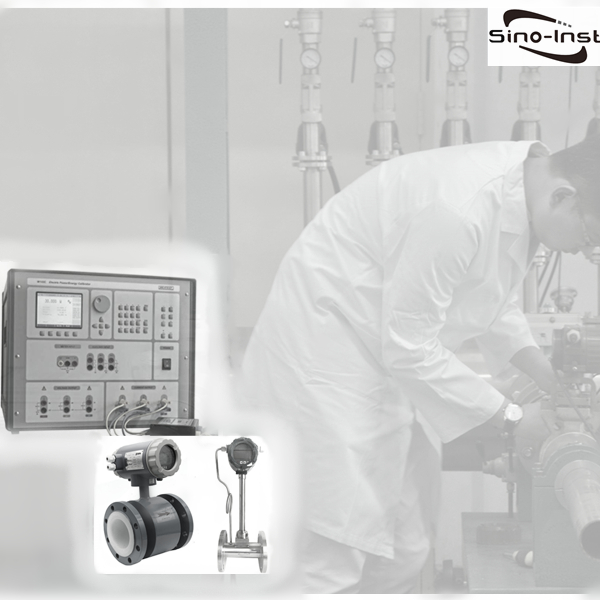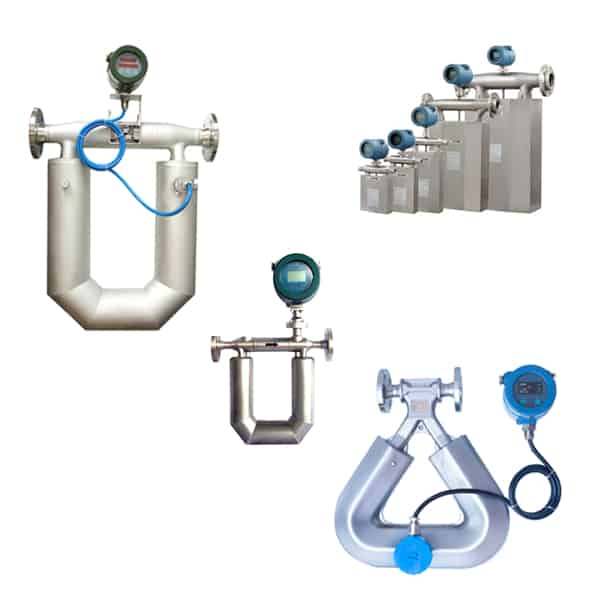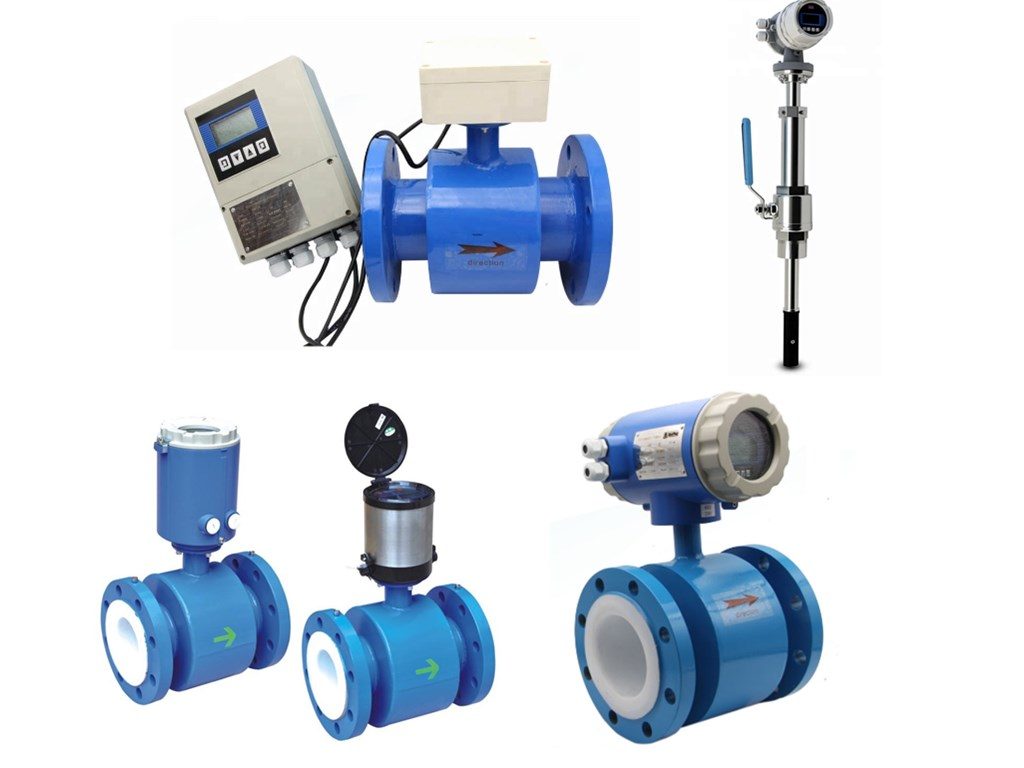Flowmeter Calibration & Recalibration is important for manufacturing process. Flow meters are used in many industries to measure and control the movement of gases or liquids.
- What is a Flowmeter?
- Different Types of Flowmeter
- What is Flowmeter Calibration?
- Flow Meter Calibration vs. Recalibration
- The Importance of Flowmeter Calibration
- Methods of Flowmeter Calibration
- Flowmeter Calibration Devices
- How Often is Calibration Needed?
- How to Calibrate a Magnetic Flowmeter
- Flow Meter Calibration Services
What is a Flowmeter?
A flow meter is a device used to measure the volume or mass of a gas or liquid. Flow meters have many names, such as flow meters, flow sensors, and so on. However, they all measure flow. Open channels such as rivers or streams can be measured with a flow meter. Or more commonly, the largest and most versatile flowmeters are focused on measuring gases and liquids in pipes. The biggest benefit of the best flowmeter is to improve the accuracy, accuracy and resolution of fluid measurement.
Why do we need a precision flow meter?
You may not! Precision flow meters are used to provide precise monitoring and / or flow control. Some industrial applications require precise quantity calculations, such as the development of precision servo valves for the aviation industry. On the other hand, applications that measure water flowing to a vineyard may require only 5% to 10% measurement accuracy.
Different Types of Flowmeter
What are the types of flow meter? You may always hear words like: electromagnetic, vortex shedding, Coriolis, Ultrasonic, Venturi…. If you want to make better choice for your flow measurement, you may need to know more about the flow meter types. Flowmeters are used to measure the flow in a piping system. Let us see the types of flow meters by their different working principle.
Flow Metering Principles
From the measurement principle, the flowmeter can be divided into Volumetric flowmeters and Mass flwo meters.
VOLUMETRIC FLOWMETERS:
- Differential Head type Orifice plates
- Venturi meters
- Annubar
- Differential Area type (Rotameters)
- Electromagnetic flowmeters
- Ultrasonic flowmeters
- Turbine flowmeters
- Vortex flowmeters
- Positive Displacement Meters
MASS FLOWMETERS:
- Coriolis Mass flowmeter
- Thermal Mass flowmeters
For different working principle, We offer different types of flow meters, like:
- Turbine Flow meter
- Electromagnetic Flow meter
- Metal Tube Rotameter
- Mass Flow meter
- Differential Pressure Flow meter
- Venturi meter
- Orifice meter
- Ultrasonic Flow meter
- Vortex Flow meter
- Thermal Flowmeter
- Open Channel Flowmeters
What is Flowmeter Calibration?
Flowmeter calibration is the process of adjusting flowmeter metering to meet standards. The preset scale or meter of the flowmeter is compared with the standard measurement scale during the process. In many industries that require high-precision measurements with a negligible percentage of error, calibration is an important aspect of instrumentation. Oil, gas, petrochemical and manufacturing.
The flowmeter is calibrated by comparing and adjusting its metering to meet predetermined standards. Flowmeter manufacturers typically calibrate their products internally after production. Or send it to an independent calibration facility for adjustment.
Flow Meter Calibration vs. Recalibration
flowmeter calibration involves comparing a running flowmeter with measurements from a standard flow measurement device under the same conditions. Adjust the scale of the flow meter to be very consistent with the standard value.
Recalibration of the flowmeter involves calibration of the flowmeter that has been used. Regular recalibration is essential. Because of the variable conditions involved in industrial processes, flowmeter readings often “out of phase” over time.
The main differences between the two procedures are:
Flow calibration is performed before the flowmeter is sent out for use. Calibration is performed after the meter has been in operation for a period of time. After calibrating the flowmeter, software tools can also be used to verify the accuracy of the measurement.
The Importance of Flowmeter Calibration
A flow meter measures the speed at which a fluid or gas passes through it. Test and measurement professionals use it for a variety of applications that require accurate flow measurement. Including (but not limited to) HVAC, energy and utilities, water management. In such applications, it is important to calibrate the flowmeter that is making the measurement. Regular calibrations ensure that the meter’s measurements are as accurate as those in the specifications.
However, even the most durable and sensitive meters can become inaccurate and lose accuracy after prolonged use. Some common causes are regular wear and tear, exposure to moisture or corrosion due to chemicals. Flowmeter function may also be interrupted due to dust accumulation, impact or failure during installation. To ensure consistent and accurate readings, the flowmeter must be periodically checked and calibrated.
Methods of Flowmeter Calibration
Common flow calibration methods are: speed type, volume type, mass type, etc.
Apply more speed-type flow measurement methods. For current flowmeters, standard throttling devices do not need to be tested. The remaining flowmeters are almost always calibrated at the factory. During the use of the flowmeter, it should also be calibrated frequently.
There are several main methods for calibrating and recalibrating flowmeters:
Volume Method
The volume method is most commonly used. This is a method of measuring the volume of fluid flowing into a constant volume container during a measurement time to obtain the flow rate. The following figure is a schematic diagram of the typical structure of a static volumetric water flow verification device. Calibrate the flowmeter with pulse output, and replace with other output flowmeters.

- The commutator 13 is used to change the flow direction of the fluid so that water flows into a standard container. Can choose standard container 15 or 16 according to the flow size.
- When the commutator 13 is started, the pulse count controller 21 is triggered. To ensure the simultaneous measurement of water and pulse signal counting.
- During calibration, the test fluid drawn from the liquid storage container by the pump is pumped into the high-level water tank. Then pass the calibrated flowmeter.
- When the standard container 15 is selected, the water discharge valve 17 is closed and the water discharge valve 18 is opened. The commutator 13 is placed at a position where the water flow is directed to the standard container 16.
- After the flow is stable, the commutator 13 is started. The water flow is changed from the standard container 16 to the standard container 15 and the pulse counter is triggered to accumulate the pulse number of the calibrated flow meter.
- When a predetermined amount of water or a preset number of pulses is reached, the commutator switches automatically. The water flow is changed from the standard container 15 to the standard container 16. The volume V of the fluid entering the standard container during this period is read from the scale of the reading glass tube of the container. Record the pulse number N of the calibrated flow meter displayed by the pulse count control 21.
- The pulse number N of the calibrated flowmeter is compared with the obtained standard volume V to determine the meter constant and accuracy of the calibrated flowmeter.
- The instantaneous flow rate of the flow meter is indicated by the frequency indicator 20.
Mass Method
The mass method is a method of measuring the mass of the fluid flowing into the container during the measurement time to obtain the flow rate. During calibration, a pump is used to draw the test fluid from the liquid storage container through the calibrated flowmeter and enter the liquid container. The temperature of the fluid was measured while weighing out. To determine the density of the fluid being measured at that temperature. Divide the weight of the measured fluid by the density of the fluid at the measured temperature to obtain the volume of the fluid. Compare it with the meter’s volume indication (cumulative pulse number). The meter constant and accuracy of the calibrated flowmeter can be determined. The accuracy of this method system can reach 0.1%.
Other methods
The working principle of the standard volume tube method is based on the volumetric method (standard volumetric method), but it is a dynamic measurement.
The standard flowmeter comparison method is to connect the calibrated flowmeter and the standard flowmeter in series on the pipeline flowing through the test fluid. The error is obtained by comparing the two measured values. The accuracy of the standard flow meter is 2 to 3 times higher than that of the calibrated flow meter.
Flowmeter Calibration Devices
Flowmeter calibration device is one of the most commonly used calibration devices in the industry. Usually used when calibration needs to be repeated.
The design of the flowmeter calibration system is similar to a workbench, and its functions include:
- Shielding of the instrument under test
- Source bracket (in lead shield)
- Connection unit for tested detector units, including low voltage source and counter
- Ionizing radiation source manipulator
- control unit
- Software for managing calibration equipment and storing data
After all parts of the calibration equipment are assembled. The responsible technician should ensure that the selected method is entered into the system and that the software initiates the calibration process. The software will select the relevant source so that it can follow the instructions entered and organize the required data. Then store all the data in the database and print the certificate as needed.
How Often is Calibration Needed?
The frequency of calibration varies from industry to industry. There are no rules set. Some applications and processes will need to measure more accurately than others. If accuracy is not an issue, then you can reduce the frequency of calibration. Maybe once a quarter. If you are using highly toxic chemicals or materials, it is advisable to perform a calibration weekly or monthly. If you are unsure how often your business needs to calibrate all operations, industry experts can advise you.
Whenever you replace flowmeter parts or think that the flowmeter may be damaged, you need to calibrate it before using it. Once again, professionals will be able to determine the impact of changes made to the flowmeter.
How to Calibrate a Magnetic Flowmeter
The measurement principle of electromagnetic flowmeter is Faraday’s law of electromagnetic induction. The electromagnetic flowmeter measures the flow of conductive fluid according to the electromotive force induced when the conductive fluid passes through an external magnetic field. The main components of the sensor are: measuring tube, electrode, excitation coil, iron core and yoke case. Products are mainly used to measure the volumetric flow of conductive liquids and slurries in closed pipelines, including acids, alkalis, salts and other highly corrosive liquids. Electromagnetic flowmeter is widely used in petroleum, chemical industry, municipal management, water conservancy construction and other fields.
Quick calibration of electromagnetic flowmeter:
- Select the corresponding pump according to the diameter and flow rate of the pipeline to be subjected to the verification test;
- After the flowmeter is correctly connected, it should be powered on and warmed up for about 30 minutes according to the requirements of the verification regulations;
- If a high-level trough water source is used, check whether the overflow signal of the stabilized water tower appears. Before the formal test, it should be in accordance with the requirements of the verification regulations. Use the verification medium to circulate in the piping system for a certain period of time. At the same time, check whether there are leaks in the sealed parts of the piping;
- Before the formal verification is started, the verification medium should be filled with the sensor of the flowmeter under test. Then the downstream valve should be closed for zero adjustment;
- At the start of the inspection, the valve at the front of the pipeline should be opened first. Slowly open the valve behind the flowmeter under test to adjust the flow at the verification point;
- During the calibration process, the flow stability of each flow point should be within 1% to 2%-the flow method. The total law can be within 5%. The temperature change of the test medium shall not exceed 1 ℃ when the verification process of one flow point is completed. It shall not exceed 5 ℃ when the entire verification process is completed;
- After each test, the valve at the front of the test pipeline should be closed first, and then the pump should be stopped to avoid emptying the voltage stabilization facility. At the same time, the remaining verification medium in the test pipeline must be vented. Close the control system and the air compressor.
Flow Meter Calibration Services
Sino-Inst provides flowmeter calibration services. Periodic calibration of the flow meter instrument ensures that the measurement value of the flow meter reaches the accuracy required by its specifications. We can customize flowmeter calibration services for you to meet your specific requirements.
Flow calibration capabilities:
- Turbine Flow Meter Calibration
- Electromagnetic Flow Meter Calibration
- Coriolis Flow Meter Calibration
- Vortex Flow Meter Calibration
- Ultrasonic Flow Gauge Calibration
- Rotometer Flow Calibration
- Thermal Mass Flow Meter Calibration
- Venturi Meter Flow Calibration
- DP Flow Meter Calibration
- Gas Flow Meter Calibration
- Laminar Flow Meter Calibration
- Liquid Flow Meter Calibration
- Optical Flow Meter Calibration
- Paddle Wheel Flow Meter Calibration
- Velocity Meter Calibration
- Viscosity Cup Calibration\Viscosity Meter Calibration
-1.jpg)


